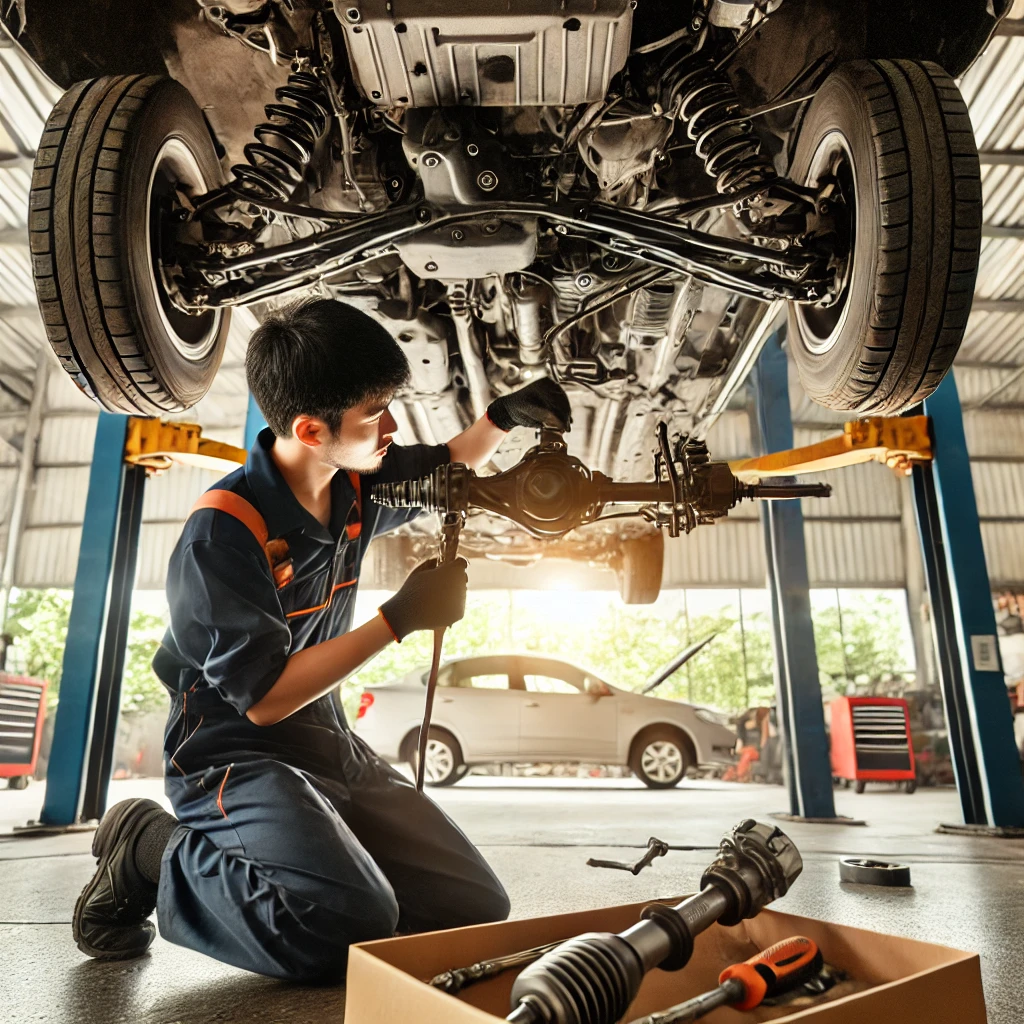What is a Steering Rack?
The steering rack is a crucial component of the steering system, translating the driver’s input into the movement of the front wheels. Most modern vehicles use rack-and-pinion steering, where the rack works in coordination with the power steering system to provide smooth and responsive handling.
Over time, wear and tear can affect the steering rack, leading to performance issues and safety risks. If the rack fails, replacing it promptly is necessary to maintain control and drivability.
Common Symptoms of a Failing Steering Rack
Before complete failure, a steering rack will show signs of deterioration. Recognizing these symptoms early can help prevent costly repairs and accidents.
- Difficulty Turning the Steering Wheel – Increased effort in turning the wheel suggests hydraulic pressure loss or rack damage.
- Loose or Unresponsive Steering – If your steering feels delayed or too light, worn-out internal components may be the cause.
- Steering Fluid Leaks – Puddles of red or brown fluid under the car indicate a leak in the power steering system.
- Grinding or Clunking Noises – Unusual sounds when turning may signal worn-out gears in the rack.
- Steering Wheel Not Returning to Center – After a turn, the wheel should return naturally; failure to do so suggests a failing rack.
- Excessive Play in the Steering – If there is a noticeable delay between steering input and wheel response, the rack may be loose.
What Causes Steering Rack Failure?
Several factors contribute to steering rack damage, including:
- Normal Wear and Tear: Over time, moving parts degrade.
- Power Steering Fluid Contamination: Dirty or old fluid can damage seals and components.
- Frequent Off-Road Driving: Rough terrain accelerates wear.
- Leaks in the Hydraulic System: Fluid loss reduces lubrication, increasing friction.
- Impact Damage: Hitting curbs, potholes, or getting into an accident can damage the steering rack.
Step-by-Step Steering Rack Replacement Process
Replacing a steering rack is a challenging task that requires mechanical knowledge. Below is an overview of the procedure:
Step 1: Preparing the Vehicle
- Park the car on a level surface and engage the parking brake.
- Disconnect the battery to avoid electrical hazards.
- Lift the car using jack stands to provide access underneath.
Step 2: Draining the Power Steering Fluid
- Locate the power steering reservoir.
- Use a hose or vacuum pump to drain old fluid.
Step 3: Removing the Old Steering Rack
- Disconnect the tie rods from the steering knuckles.
- Unbolt the steering column shaft connected to the rack.
- Loosen the hydraulic lines (for hydraulic power steering).
- Remove the rack mounting bolts and carefully lower the unit.
Step 4: Installing the New Steering Rack
- Position the new steering rack and align it with the mounting points.
- Secure the rack with bolts and reconnect the tie rods.
- Reattach the steering shaft and any electrical connectors (for EPS systems).
Step 5: Refilling and Bleeding the System
- Fill the system with new power steering fluid.
- Start the car and turn the wheel left and right to remove air bubbles.
Step 6: Final Checks and Wheel Alignment
- Ensure the steering is smooth and responsive.
- Get a wheel alignment to prevent uneven tire wear.
How Much Does Steering Rack Replacement Cost?
The cost of replacing a steering rack depends on the vehicle make and model:
- Parts Cost: £300 – £900
- Labor Cost: £200 – £500
- Total Cost: £500 – £1,400
Luxury or performance vehicles tend to have higher costs due to advanced steering technology.
Preventative Maintenance Tips for Steering Racks
- Check and Replace Steering Fluid Regularly: Dirty fluid damages seals.
- Inspect for Leaks and Damage: Catching small issues early prevents bigger repairs.
- Avoid Rough Driving and Potholes: Hard impacts shorten rack lifespan.
- Schedule Steering Inspections: A mechanic can detect early signs of wear.
Conclusion
A properly functioning steering rack is essential for safe and smooth driving. If you notice signs of failure, don’t delay the replacement. A faulty rack can lead to steering loss, putting you and others at risk. For best results, always consult a professional mechanic for steering repairs and replacements.

